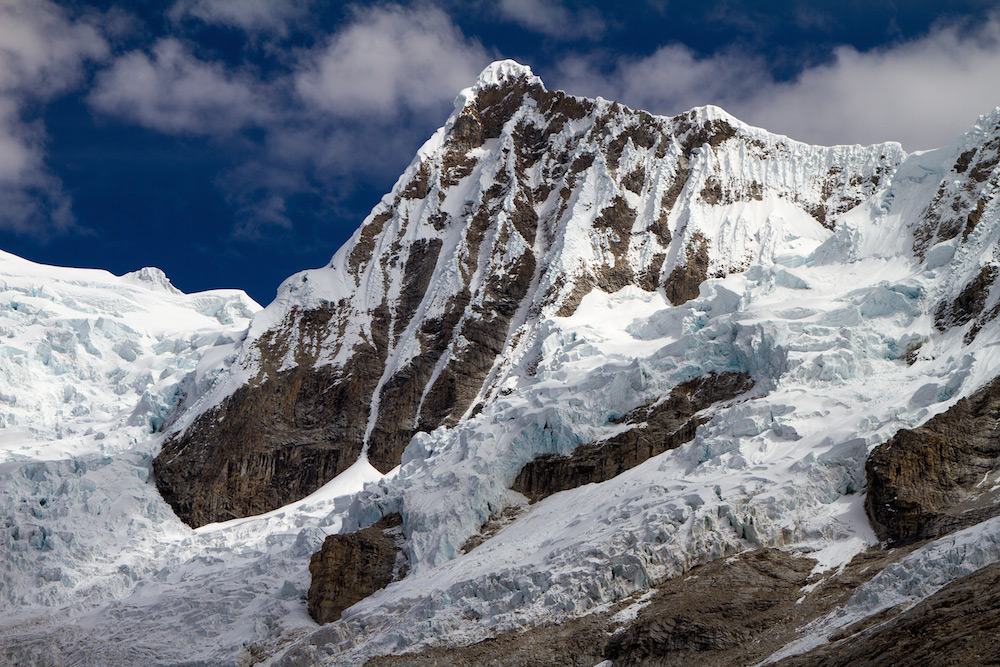Humans Are to Blame for Earth's Rapidly Melting Glaciers

The steady melt of glacial ice around the world is largely due to man-made factors, such as greenhouse-gas emissions and aerosols, a new study finds.
Humans have caused roughly a quarter of the globe's glacial loss between 1851 and 2010, and about 69 percent of glacial melting between 1991 and 2010, the study suggests.
"In a sense, we got a confirmation that by now, it is really mostly humans that are responsible for the melting glaciers," said lead researcher Ben Marzeion, an associate professor of meteorology and geophysics at the University of Innsbruck in Austria. [Images of Melt: See Earth's Vanishing Ice]
Vanishing glaciers are often associated with global warming, and other studies have estimated past ice loss and made projections of future melt. But until now, researchers were unsure how much glacial loss was tied to human factors.
"So far, it has been unclear how much of the observed mass losses are caused by humans rather than natural climate variations," Regine Hock, a professor of geophysics at the University of Alaska Fairbanks who was not involved in the study, wrote an in email to Live Science.
The researchers used "state-of-the art modeling techniques," in their work, Hock said.
The research team relied on 12 climate models, most of them from the latest reports from the Intergovernmental Panel on Climate Change, an international group of climate-change experts convened by the United Nations. By combining the models, along with data from the Randolph Glacier Inventory (a catalog of nearly 200,000 glaciers), the researchers created a computer model that included only natural contributions to glacier melt, such as volcanic eruptions and solar variability, and another model with both human and natural factors.
Get the world’s most fascinating discoveries delivered straight to your inbox.
Using data from 1851 to 2010, the researchers compared the two models with real measurements of glaciers to determine which one better represented reality. The study did not include glaciers in Antarctica, because not enough data on the region was available during the 159 years covered by the study.
The model with the man-made influences was a better fit, they found.
"Glaciers thin and retreat around the world as a result of rising air temperature, but the glaciers don't care whether or not the increase in temperature is due to natural or human causes," Hock said. "Over the last 150 years, most of the mass loss was due to natural climate variability, caused, for example, by volcanic eruptions or changes in solar activity.
"However, during the last 20 years, almost 70 percent of the glacier mass changes were caused by climate change due to humans," she wrote.
Interestingly, the study found that glaciers, which are slow to react to climate change, are still recovering from the end of the Little Ice Age that lasted from the 14th to the 19th centuries. During the Little Ice Age, temperatures were about 1.8 degrees Fahrenheit (1 degree Celsius) colder than they are today.
Warmer temperatures after the Little Ice Age affected the glaciers. "Essentially, what we find is that glaciers would be melting without any human influence," Marzeion told Live Science.
The melt, however, would not be happening as quickly as it is today if it weren't for man-made contributions, such as aerosols from wood or coal fires, he said. Aerosols are particles suspended in the atmosphere that absorb and scatter the sun's radiation.
Even if climate change from both man-made and natural causes stopped today, the glaciers would continue to melt and are projected to raise ocean levels by 2.7 inches (7 centimeters) during this century, Marzeion said.
As global temperatures continue to rise, the glaciers will continue to disappear. The melt may provide more water for irrigation and other needs, but it won't be sustainable because the glaciers may eventually vanish, Marzeion said. In the meantime, people can try to reduce man-made contributions to global warming and adapt to the changing planet, he said.
The study was published online today (Aug. 14) in the journal Science.
Follow Laura Geggel on Twitter @LauraGeggel and Google+. Follow Live Science @livescience, Facebook & Google+. Original article on Live Science.

Laura is the managing editor at Live Science. She also runs the archaeology section and the Life's Little Mysteries series. Her work has appeared in The New York Times, Scholastic, Popular Science and Spectrum, a site on autism research. She has won multiple awards from the Society of Professional Journalists and the Washington Newspaper Publishers Association for her reporting at a weekly newspaper near Seattle. Laura holds a bachelor's degree in English literature and psychology from Washington University in St. Louis and a master's degree in science writing from NYU.


